A Complete Guide to Data Automation for Marketers
Published on July 18, 2024/Last edited on April 01, 2025/17 min read
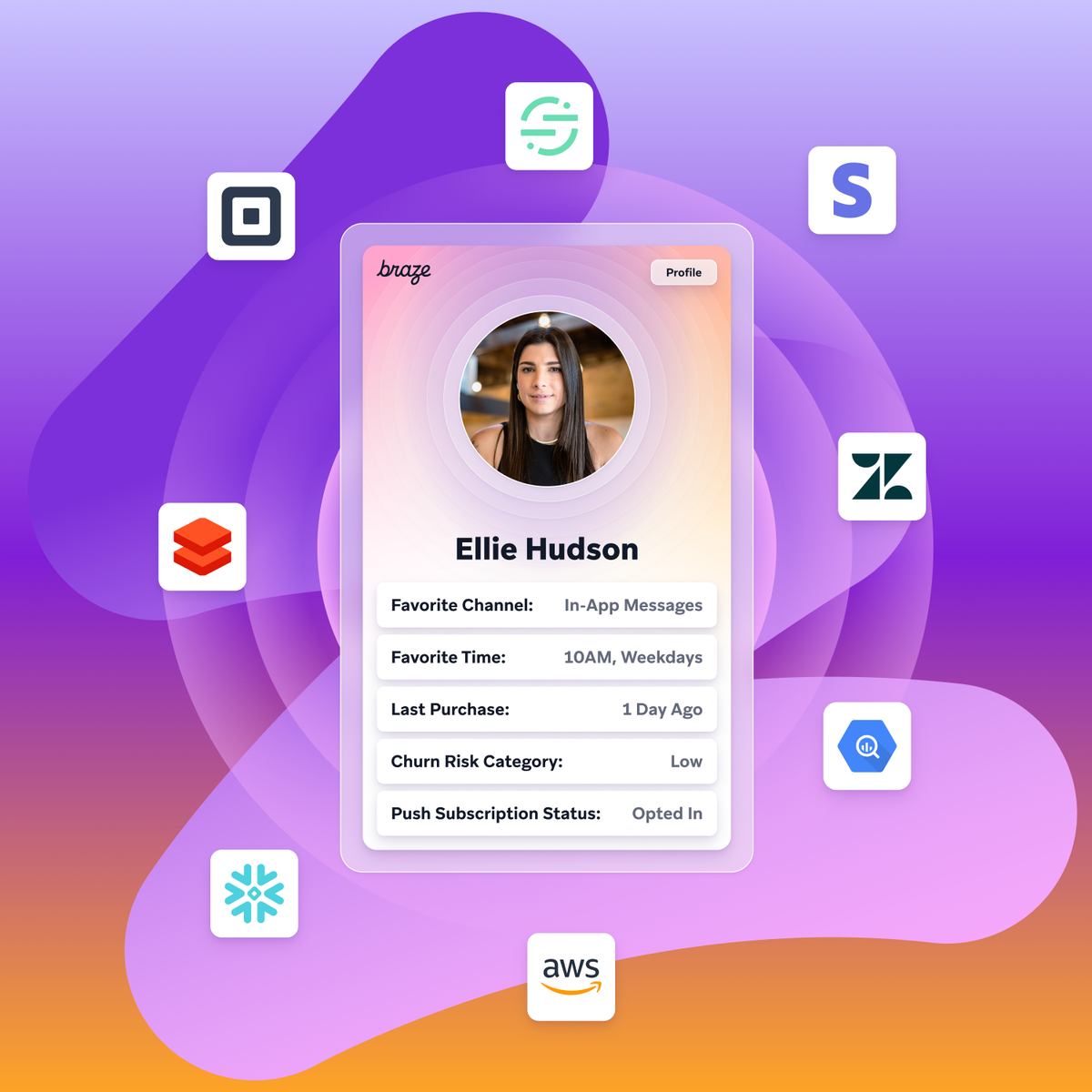
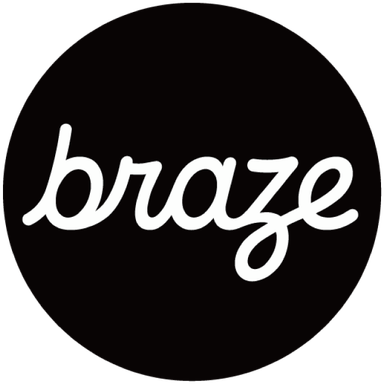
Team Braze
Curious about data automation? You’ve come to the right place. This comprehensive guide dives deep into how it relates to marketing and customer engagement. Learn what it is, where it stands today, how to implement it, and how it can benefit your business.
You’ll discover how data automation integrates with customer engagement platforms and explore examples of ambitious brands that leveraged this technology to refine their marketing campaigns and achieve impressive results.
- Data Automation is Disrupting Marketing
- What’s Data Automation?
- How’s Data Automation Work?
- Important Data Automation Terms
- The Evolution of Data Automation
- Data Automation for Marketing and Customer Engagement
- Data Automation in a Digital World
- Email Marketing with Data Automation
- Getting Started with Data Automation for Marketing
- Customer Engagement Platforms Are Essential for Data Automation
- The Braze Data Platform
- Three Brands Who Used Braze for Data Automation
- Things Can Only Go Up From Here
- Data Automation FAQs
Data Automation is Disrupting Marketing
Modern marketing is no longer a case of sending messages en masse and hoping they land. New automation tools help marketers be more precise and personal. “Tailored to the masses” is no longer an oxymoron. Today, it’s reality.
Instead of burning out your data analysts, you can now automate the stream, analysis, and action of real-time data—from multiple sources. This empowers your brand to send thoughtful, timely, personal messages that hit home. These are data-backed messages, designed to build better, lasting relationships with customers. Over time, this fuels more revenue for your business.
But, despite the revolutionary advent of data automation, many still struggle to harness its full potential. The sheer volume of data that brands are handling today can make it challenging to deliver memorable, tailored experiences to their customers. Sometimes that's due to technical barriers such as data silos, batch processing, and lack of expertise that hinder access to the data marketers need; sometimes it's the disorganized and disjointed way the data is structured that causes issues. However, we’ve got your back! Study this guide, and you’ll be an expert before you know it.
What’s Data Automation?
Data automation streamlines the unification, activation, and distribution of information, enabling you to “do more with less.” Instead of relying on manual methods, intelligent tools, including AI-powered algorithms, allow cross-functional teams to complete data tasks faster than ever.
These advanced tools can automate decision-making based on the available information. By leveraging automation for these processes, businesses can increase speed and accuracy, ultimately accelerating growth. But automation isn’t just faster; it’s also smarter, helping you spot trends and predict behavior in the blink of an eye.
How Does Data Automation Work?
If that summary piqued your interest—or you want to impress your data engineers—continue reading. The following is an overview of how data automation works within the Braze platform as an example.
Cloud Data Ingestion (CDI)
Cloud Data Ingestion allows you to seamlessly sync data from your data warehouse to Braze in order to create market segments for targeting and personalization at scale. With just a few clicks, Braze connects to your data warehouse, ensuring you have access to the most up to date data to update user profiles. This gives you the fuel to create more relevant, effective customer experiences.
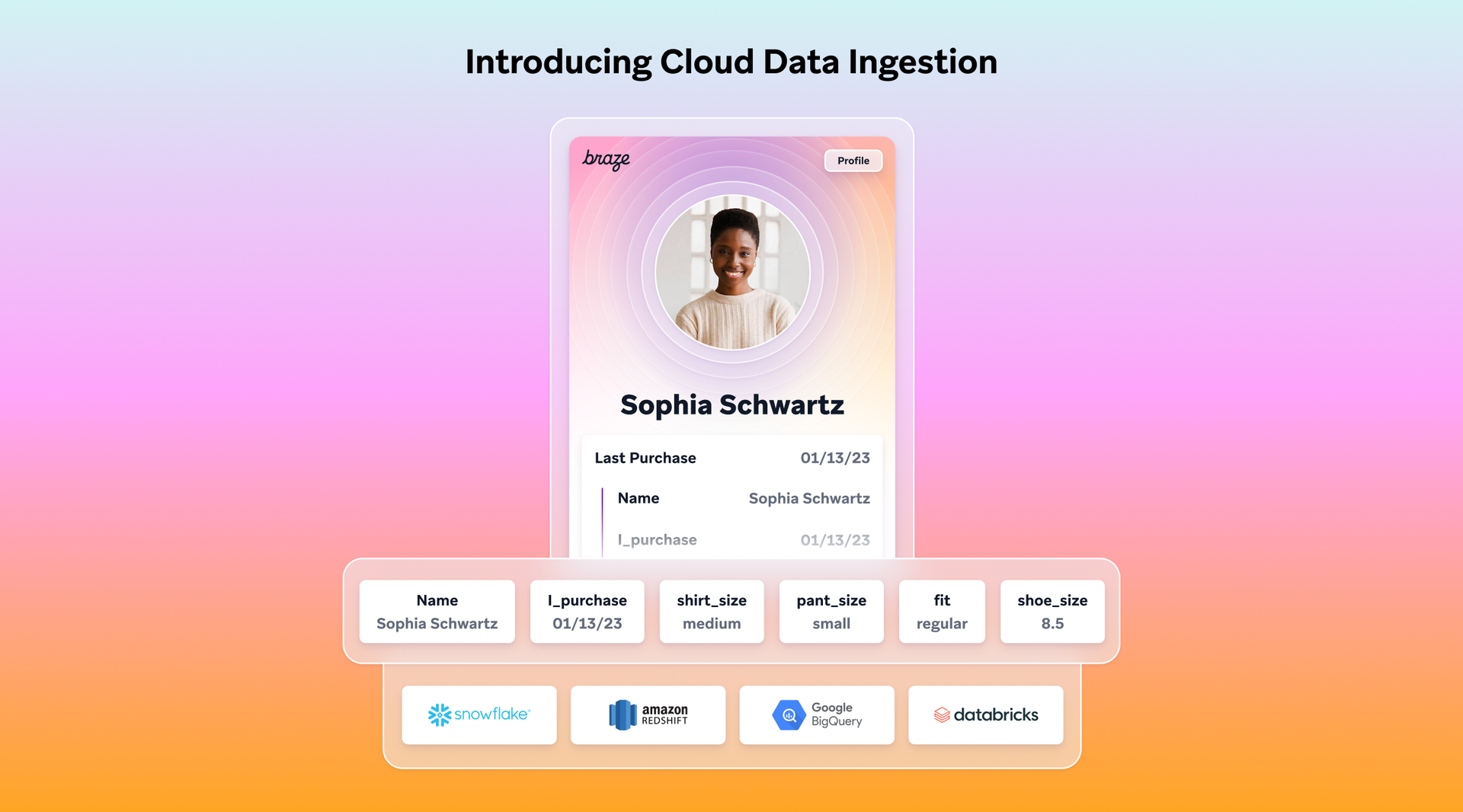
Additionally, you can now activate data from your data warehouse, without moving it to Braze with CDI Segments. This feature gives you zero-copy access to your data warehouse to create new segments, and build and tailor new audiences within Braze—supporting a more streamlined, efficient use of data to power targeted messaging and responsive experiences.
Software Development Kits (SDKs)
SDKs enable detailed data collection of user attributes, behaviors, and engagement scores. Once they’re embedded on your website and/or app, SDKs collect nuanced session data in real time. Ultimately, this helps you create automated, in-the-moment messaging journeys at scale.
Application Programming Interfaces (APIs)
APIs exist within SDKs. APIs help you collect data across multiple systems, like loyalty databases, social media channels, or internal sources. At Braze, our APIs accept data from (almost) anywhere, as long as they’re properly formatted for transmission. To avoid integration roadblocks, Braze also integrates a range of partners to supercharge your company’s tech stack. These include:
- Customer Data Platforms: To improve data access, agility, and ease of use
- Analytics Solutions: To dive deeper into cross-channel customer data
- Reverse ELT Solutions: To create live data syncs between data warehouses and Braze

Important Data Automation Terms
Extract, Transform, Load (ETL)
ETL is the process of grabbing data from multiple sources, transforming it, and then loading it into a new system for unification, better access, and ease of use.
Depending on your needs, this process can also happen in a different order: Extracting, Loading, and Transforming (ELT). Regardless of approach, this is all about merging data from disparate sources to create a single source of truth (SSoT).
For example, you might use ETL to combine data from websites, apps, email campaigns, SMS, and social media. Then, to use that comprehensive data grouping to build holistic, real-time profiles to create timely, targeted customer interactions. And finally, to analyze customer habits, across channels, before reshaping a creative strategy.
Batch Data vs Live Streaming Data
Batch data is like a timetabled bus service. Streaming data is more like an on-demand ride-hailing app. One is predictable, but slow. The other is immediate.
Batch data comes in batches. E.G. at the end of each day. But live streaming data is delivered continuously, in real time.
Batch data is fine for tasks that don’t require immediate action, like generating end-of-year reports. The problem is, that data is often outdated and too late for tasks that require real-time responses from brands (E.G., sending customers abandoned cart emails).
For prompt and profitable intervention, live streaming data is essential. If there’s a 24+ hour lag in data reception, you’re waiting for insights while your customer’s exploring alternatives.
The Evolution of Data Automation
Data automation gained traction in the ‘90s when enterprise platforms became more common. This brought the potential of using centralized data to automate processes and workflows across organizations.
At first, aspirations were limited. Brands automated simple tasks, like data entry and processing. But, as the internet evolved and technology advanced, brands started collecting real-time data on a larger scale. This trend spawned tons of data automation and analysis tools; tools that didn’t just process data, but leveraged it to make better predictions and smarter decisions.
Nowadays, automating your data is table stakes. All successful businesses use it to speed up processes, improve accuracy, and facilitate fast, data-based decision-making. And, with rapid advances in AI, the benefits of automating data continue to grow exponentially.
At Braze, our AI-powered predictive suite, BrazeAI™, helps marketers use data automation to create engaging experiences on individualized levels. Here’s a quick overview of what Braze can do:
- Predict customer behaviors: Identify people who are most likely to complete purchases
- Personalize campaigns: Match individuals with the offers, messages, and channels they’re most likely to engage with
- Curate content: Highlight items and articles at scale based on past user behavior
- Generate art and copy: Use AI to generate visual and written content faster; automate quality control before hitting send
- Automate A/B testing: Leverage AI to automate A/B testing and implement findings
The opportunity is now. Learn how to build stronger customer relationships and unlock lifetime loyalty with data activation and automation.
Data Automation for Marketing and Customer Engagement
Data automation is increasingly integral to marketing. The rise of mobile and the growth of modern cloud platforms have opened up major opportunities for marketers to deliver highly relevant, personalized experiences at scale.
The challenge? With so much data held in so many different places, brands often struggle to get a hold of the information they need in order to take effective action and build stronger customer relationships.
The opportunity? Brands can leverage tools that enable them to send the right message on the right channel at the right time and at scale, within the budget and resources available to them.
Eight Examples of Data Automation in Marketing
1. Automated Marketing Campaigns
Use automation tools to send targeted email campaigns based on segments, behaviors, and preferences.
2. Dynamic Content Personalization
Tailor web content, product recommendations, and advertisements at scale — without lifting a finger.
3. Customer Journey Mapping
Identify pain points and determine solutions by auto-mapping and analyzing customer journeys across touchpoints.
4. Lead Scoring and Nurturing
Automate lead scoring models to prioritize leads; nurture them with content they can’t resist.
5. Predictive Analytics
Automate analytics to predict customer behavior and deliver personalized items and offers in real time.
6. Automated Loyalty Programs
Use automation tools to track customer purchases, manage loyalty programs, and reward customers with incentives that vary and appeal on individual levels.
7. Cross-Channel Engagement
Automate data integration from various channels and touchpoints to create more cohesive marketing campaigns.
8. Chatbots and Virtual Assistants
Launch chatbots and virtual assistants to automate customer support, answer common inquiries, and facilitate seamless interactions.
Data Automation in a Digital World
Data automation multiplies potential without adding resources. It also improves customer experiences by delivering the messages and ads they want to see. If that wasn’t enough, it can also help brands do the following:
Meet Customer Expectations
The general customer expectations are growing. They’ve seen brands deliver seamless customer service and experiences, and now they want the same from your brand. This makes sense since, over time, the baseline for customer satisfaction is always on the rise. Brands that fail to keep up fail to keep customers.
Increase Operational Efficiency
Data automation improves workplace efficiency through streamlined, low-touch workflows. These automated workflows free up employees for more creative, strategic work. This means you and your team have time to do more — and do it better.
Seize Opportunities in Real Time
Data automation lets you access and analyze data in real time. This means instant feedback on ad campaigns, which allows you to edit those campaigns—fast. Even better? With new tools, you can automate workflows that help you respond to customer behavior in the moment. Do so by initiating triggers that prompt personal, contextually relevant interactions.
Email Marketing with Data Automation
Leverage data automation to avoid slow and manual processes that cost you time, money, and effort when building email campaigns.
Benefits include:
- Segmentation: Segment email lists based on user behaviors, preferences, and demographics
- Personalization: Deliver personalized content, down to the individual, in real time
- Timing: Determine optimal email timing for recipients based on individual habits and patterns
- Tracking: Track user engagement metrics and watch the system adjust in real time
- Efficiency: Streamline email processes and save time and money by automating repetitive tasks
- Efficacy: Achieve better, longer engagement through deep relevance and timing optimization
Getting Started with Data Automation for Marketing
Although these processes are, ultimately, automatic, they’re still at the mercy of human creativity, design, and planning. It’s not as simple as “let’s automate our data.” You’ll need extensive prep before you even start. And, once you’re up and running, you’ll need to test, refine, optimize, and repeat for the best results. Until then, here are four general steps to get started:
1. Define Your Goals
Start with strategic objectives and work from there. For example, do you want data automation to increase conversions? Generate better revenue? Reduce customer acquisition costs? Increase operational efficiency? Whatever the case, you’ll need to align your data automation efforts with your business objectives. Need inspiration? Check out our data management and customer engagement report.
2. Identify Your Sources
Now, assess what data sources are available. Most marketers have some or all of the following:
- CRM systems
- Website analytics
- App analytics
- Transaction data
- Third-party data
- Social media platforms
- Email marketing platforms
- Customer surveys and feedback
- Customer service interaction logs
3. Review Your Tech Stack
Data automation requires the right technology. Consider the following:
Customer data platform: A centralized system that collects and manages customer data
Analytics tools: Tools for data visualization, trend spotting, and reporting
Customer engagement platform: A platform that orchestrates and automates personalized messaging across channels
4. Pick Your Team
Organize the following team members to help install data automation processes:
Engineers: To configure and implement automation tools
Data analysts: To analyze and interpret data and draw conclusions
Marketing professionals: To develop creative strategies and launch campaigns
Need more? Read everything there is to know about activating customer data to unlock ROI.
Customer Engagement Platforms Are Essential for Data Automation
To make data automation easier, you need a Customer Engagement Platform (CEP). This platform is your hub for smart, data-fueled marketing strategies. CEPs help you collect, consolidate, and analyze customer data from multiple channels. With that data, you can gather actionable insights in real time. And finally, design and deliver cross-channel campaigns that perform like crazy.
Here are seven key benefits of using a CEP:
1. Data Integration
Customer engagement platforms combine data from multiple sources into one unified database. These sources include CRM systems, marketing tools, e-commerce platforms, social channels, and customer service logs.
Even better? All this data is standardized, accessible, and actionable within your CEP—not spread out across multiple solutions.
2. Automated Data Capture
Using tools like pixel tracking, social monitoring, and transactional data capture, engagement platforms capture and record interactions in real time.
With automated data capture, you won’t lose any pieces of the puzzle. Instead, customer profiles are current and comprehensive, providing a holistic view of all brand interactions.
3. Segmentation and Personalization
Automatically group and split customers into highly specified segments for tailored messaging. With a good CEP, you can even personalize messages down to the individual, no matter how big your audience is.
Beyond personalization, your CEP can also automate product recommendations and channels to maximize engagement.
4. Automated Campaign Execution
Use intuitive, no-code tools to build cross-channel messaging journeys. Then, automate executions based on real-time customer behavior.
A good engagement platform helps marketers optimize campaigns to improve customer experience.
5. Behavioral Triggers and Workflows
Sets up automated workflows and trigger-based actions based on real-time customer behavior.
Drive users where you want them to go. E.G., send friendly pop-ups that discourage app exits. Or emails to re-engage those with abandoned carts.
6. Performance Tracking and Analytics
All platforms have built-in analytics and reporting capabilities. These are used to track customer engagement efforts in real time.
Monitor key metrics, identify trends, and gain insights into what’s working and what isn’t. Then, make changes and re-launch your newly improved creative.
7. Experimentation and Optimization
A/B testing and result analysis are core components of CEPs. These give marketers the green light to experiment, easily, which leads to more effective campaigns that deliver bigger, better results.
The Braze Data Platform
Braze has continued to build out a series of products and integrations across the data ecosystem that makes it easier for brands to unify and activate both zero- and first-party data—and now we are taking it one step further with the Braze Data Platform.
It is a comprehensive, composable set of new and existing Braze capabilities and partner integrations available in our customer engagement solution, designed to help marketers leverage data to deliver more impactful, scalable customer experiences powered by Braze. Braze can ingest and unify data from an extensive set of partners including Snowflake, AWS, Shopify, Segment, and mParticle, among others.
With Braze Data Platform, you can uncover and group insights via first-party interactions, apps, or websites. This empowers brands to respond to ever-changing customer behaviors in real time, supporting relevant, memorable customer experiences.
The Braze Data Platform includes 150+ turnkey partner integrations that make it easy to collect data, make sense of it to drive relevant experiences that drive true impact, and send engagement data out to your preferred software solutions (Databricks, Google, Tealium, etc.).
In general, our data capabilities span three major categories: data unification, data activation, and data distribution:
Data unification: Collect and consolidate data from various external sources to create detailed customer profiles
Data activation: Clean, organize, and prepare data to ensure it’s ready to use for targeting and segmentation
Data distribution: Send real-time engagement data to your storage partners for reporting, analysis, or anything else
Three Real-life Examples of Data Automation
MoneySuperMarket
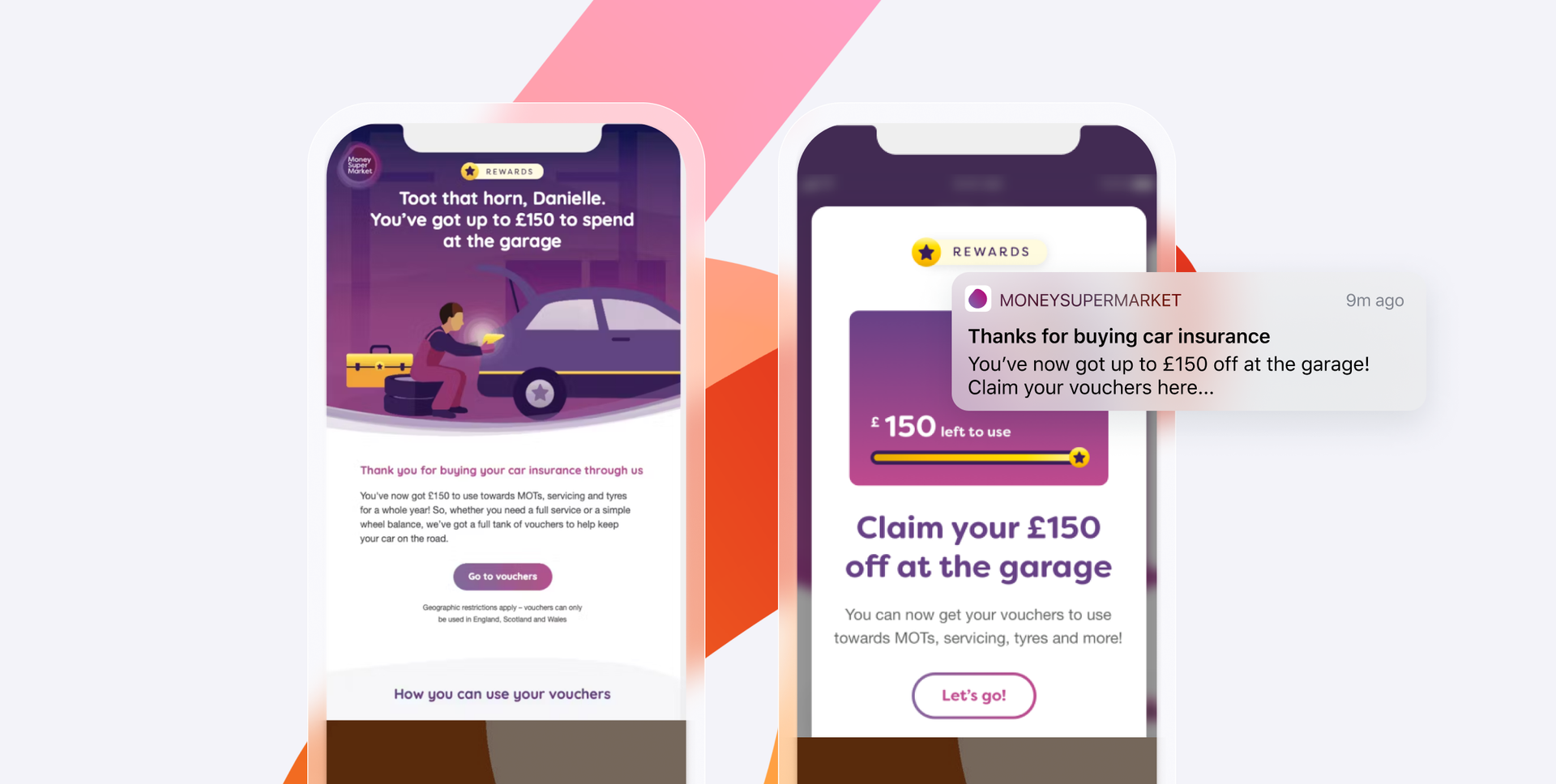
MoneySuperMarket wanted new avenues for customer engagement. But they were hampered by disconnected data and slow send rates.
To help out, their team turned to Braze. Braze was able to stream multiple sources of data, power relevant cross-channel experiences, and increase loyalty sign-ups and engagement.
By connecting their content recommendation engine and data warehousing systems to Braze, MoneySuperMarket drove a 25% increase in conversions and boosted send rates from 500 per minute to 25,000 per minute.
Virgin Red
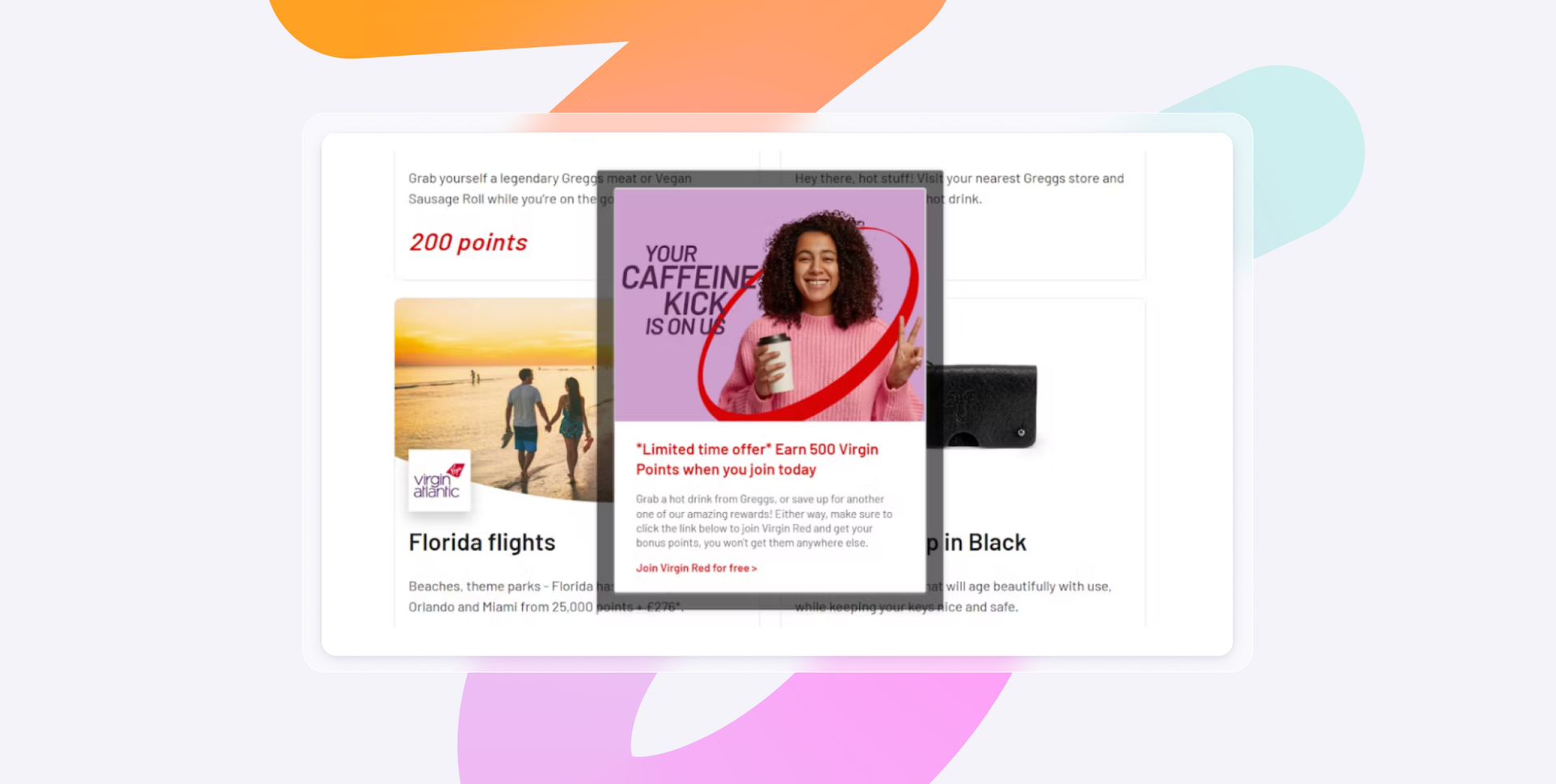
Virgin Red wanted to help parent company Virgin retain more customers. However, they couldn’t enable cohesive, cross-channel engagement due to disparate tools and data sources.
With Braze, Virgin Red was able to downsize from three tools to one — a marketer-friendly, data-driven platform that streamed live data and automated messaging across all channels.
With Braze, Virgin Red helped Virgin improve open rates by 45%, which led to a significant increase in loyalty program conversions.
Mon-Marché
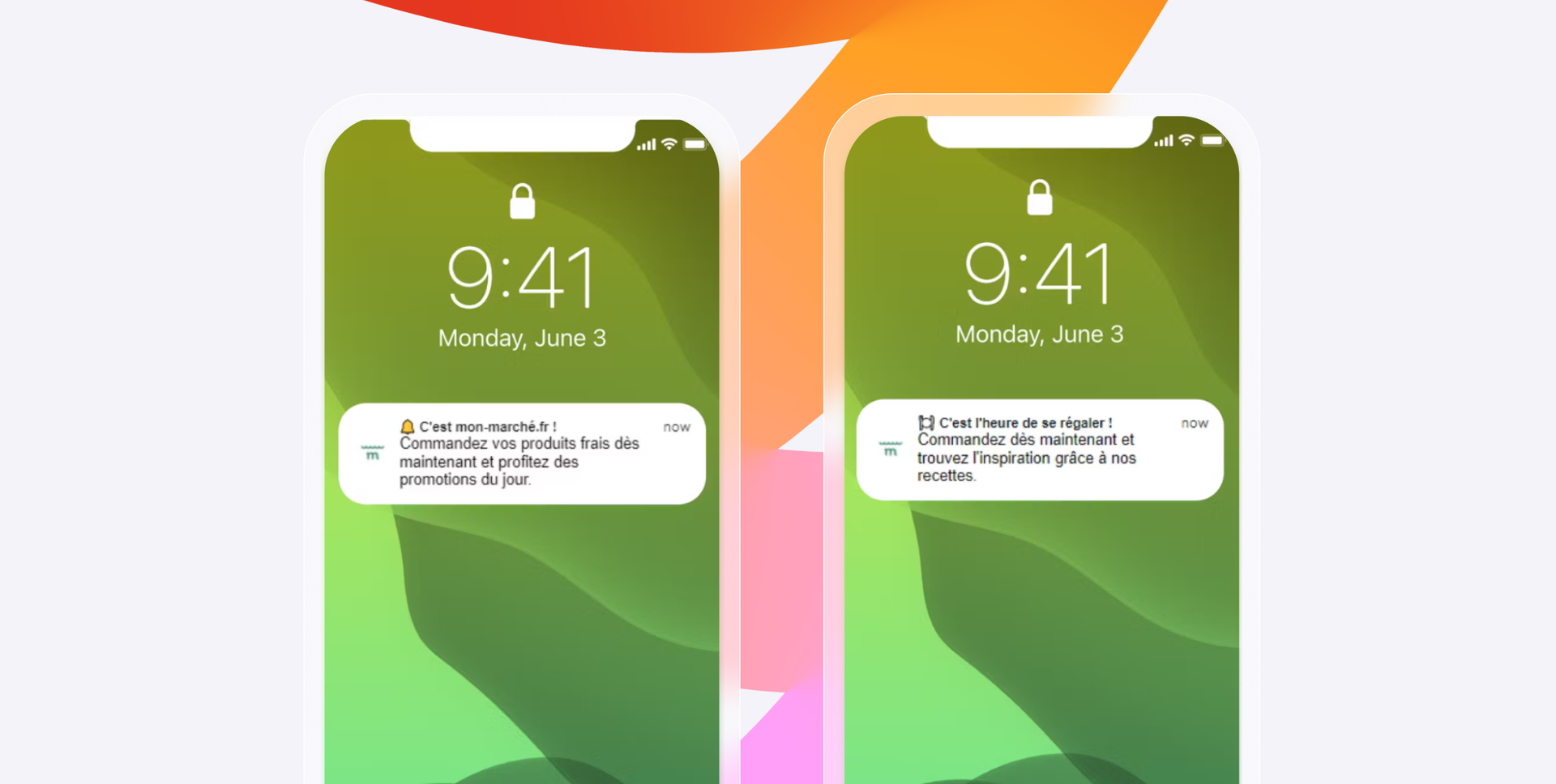
Mon-Marché wanted to collect customer data to create personalized messages. But they didn’t want to hire additional tech personale.
With Braze, Mon-Marché was able to automate, import, and activate new data sets to enable more personalized content for customers. Later on, they used that data to send order reminders to customers, based on who they were and how they interacted with the brand.
With better tools on hand, Mon-Marché was able to dissect their data, personalize communications, and grow their brand with a 43% uptick in orders.
Things Can Only Go Up From Here
For marketers, data automation is a true revolution. “Wishful thinking” is no longer a valid strategy. Advanced, automated data tools make it easier to create a single source of truth (SSoT) for customer data. Now, marketers can react and iterate in real time, paving the way for better campaigns, better conversion rates, and better profits.
With pre-set, yet adaptable messaging and behavioral triggers, brands can send highly personalized messages to customers at the right times — on the right channels.
Data automation makes it faster and easier to leverage data for commercial benefit. Improve customer service. Streamline customer journeys. Increase sales. And enter new markets. The opportunity for growth is skyrocketing.
Customer engagement platforms like Braze are vital hubs for data automation. These intuitive, comprehensive platforms are now mandatory for all serious businesses. Here, data, strategy, creative, execution, and experimentation live in one place, in perfect harmony. A good CEP helps you stream, analyze, and activate data from every customer, across every touchpoint. More proof that there’s never been a better time to be a better marketer.
Data Automation FAQs
What are data automation tools?
Data automation tools are designed to automate data-related tasks, such as data collecting, processing, analyzing, and reporting.
These tools have many components, including CRM systems, marketing automation platforms, data integration tools, predictive analytics, and AI-powered chatbots.
What’s an example of data automation?
Example: An eCommerce site captures customer interaction data (product views, clicks, purchases). This data is collected, processed, analyzed, and actioned automatically, in real time.
What is data analytics automation?
Data analytics automation is the automation of data analysis. It covers tasks like data cleansing, transformation, visualization, and reporting.
Automation tools use machine learning algorithms to help businesses collect actionable insights, fast. Ultimately, these automated processes power more confident data-based decision-making.
With data analytics automation, data analysts are able to respond faster and make less mistakes. Plus, with large, complex data sets, analysts can spot trends they might otherwise miss.
How does data automation improve customer engagement?
Data automation empowers organizations to send more personalized, more timely messages across multiple channels. By automating data collection, segmentation, and analysis, businesses enjoy a 360° view of customer preferences, behaviors, and needs. This enables marketing teams to tailor messages, offers, and item recommendations down to the individual. With more relevant campaigns, engagement spikes, loyalty increases, and brands enjoy long, lasting relationships with customers.
How does data automation optimize marketing campaigns?
Data automation sharpens marketing campaigns by capturing customer data in real time. In turn, marketers can develop more personalized, effective messages at scale.
With complete customer data in clear view, marketers can spot trends and opportunities they might normally miss. From there, you can automate A/B testing, which encourages experimentation and allows for time and channel optimization.
By automating tedious manual processes, marketers can now focus on more strategic, creative work.
Releated Content
View the Blog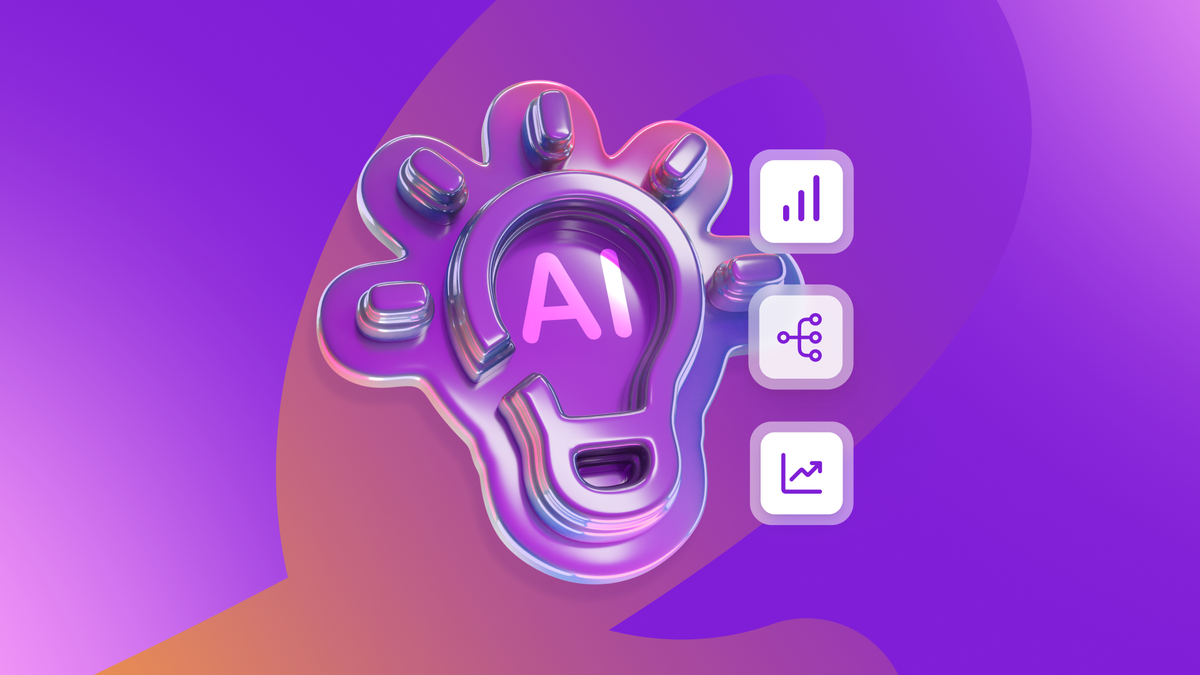
Enterprise generative AI: Transforming data, decisions, and customer experiences

Team Braze
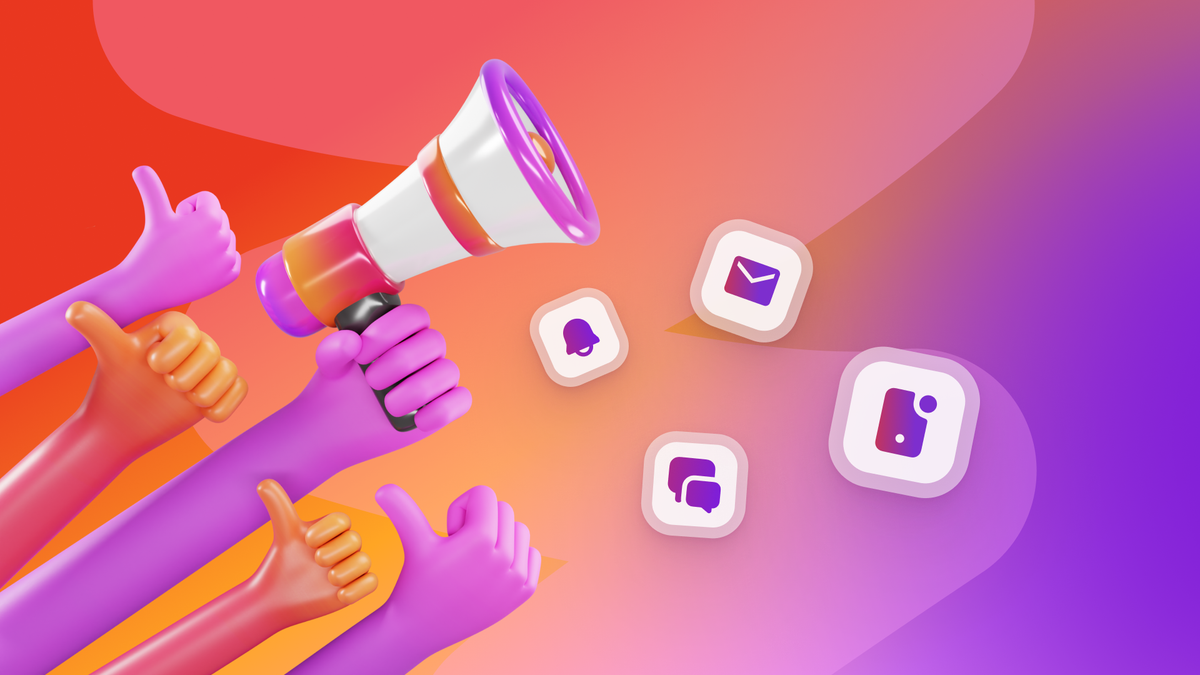
Omnichannel personalization: Delivering consistent, connected customer experiences

Team Braze
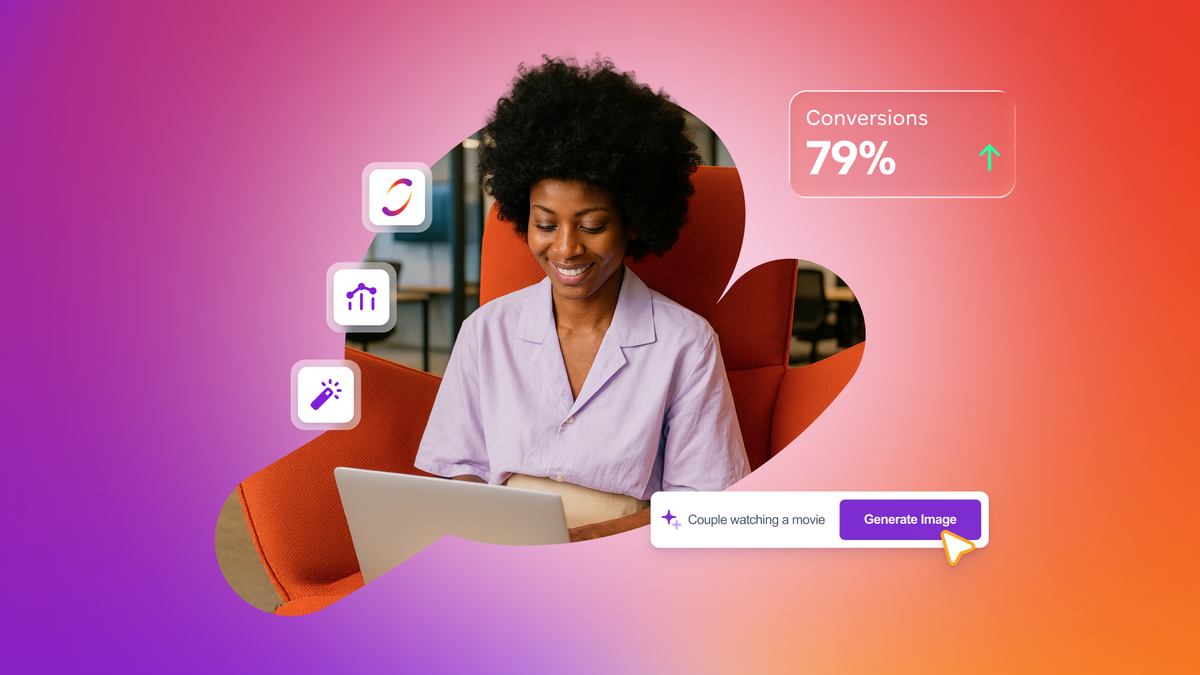
Are you AI-savvy enough to survive? A wake-up call for CMOs
